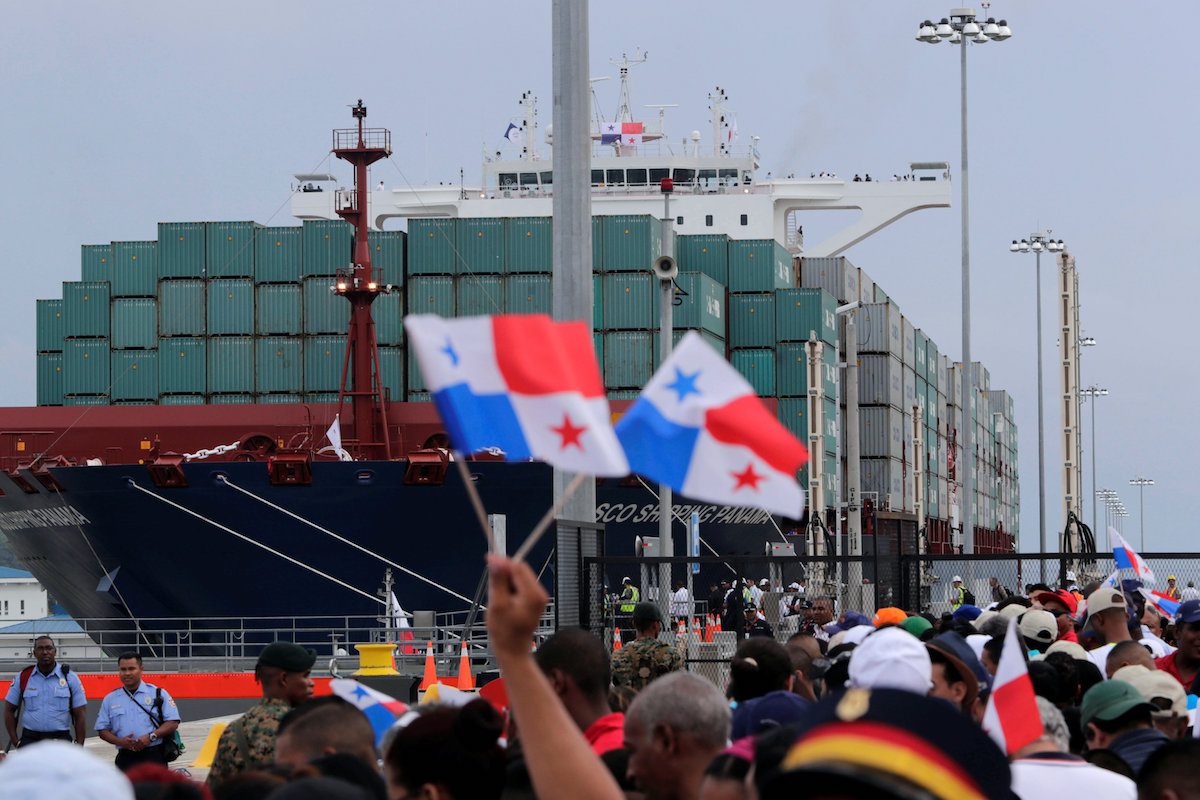Russian Oil Shipments Shift To Western Tankers As Prices Slump
By Julian Lee and Lucia Kassai Apr 11, 2025 (Bloomberg) –A slump in oil prices is allowing Russia’s crude to be carried on tankers owned and insured by western companies, helping...

The Panama Canal Authority is marking the seventh anniversary of the opening of its expanded Neopanamax locks, facing what may be its most significant challenge yet: a severe drought.
Since the inauguration of the larger locks on June 26, 2016, over 20,600 vessels have transited the expanded Panama Canal. This expansion project, the largest since the waterway’s original opening in 1914, has revolutionized shipping by not only accommodating larger ships, but also new types of vessels such as LNG carriers, facilitating the rise of the United States as one of the world’s biggest exporters of natural gas.
Initially, the Neopanamax Locks were designed to serve vessels with a maximum capacity of 12,600 twenty-foot equivalent units (TEUs). However, the Panama Canal Authority quickly surpassed this limit by allowing higher-capacity containerships to transit. Currently, the MV Zephyr, with a capacity exceeding 16,000 TEUs, holds the record as the largest containership to use the waterway.
Now, the Neopanamax Locks contribute to over 50 percent of the Panama Canal’s total tonnage, representing more than 270 million Panama Canal tons (PC/UMS) transported between June 2022 and May 2023.
Nonetheless, this seventh anniversary brings significant challenges related to water availability and climate as normal canal operations are disrupted by a historic drought, forcing the Panama Canal Authority to institute strict draft restrictions, limiting the size of ships using the canal and the amount of cargo they can carry.
Over the past decade, the Panama Canal has experienced prolonged dry periods, with the second and fifth driest years recorded in over 70 years. The month of May 2023 was the driest since 1950, exacerbating an ongoing water shortage in the Panama Canal watershed with directimpacts on the operation of the Neopanamax locks.
In response to dwindling water levels in Gatun Lake, the Panama Canal Authority has already imposed a series of increasingly stricter draft restrictions since the beginning of this year. Currently, vessels transiting the Neopanamax locks are allowed a maximum draft of 44 feet, significantly shallower than the originally designed maximum draft of 50 feet.
Although recent rainfall has temporarily delayed additional draft restrictions from coming into effect, concerns about the potential impact of this year’s El Niño on weather patterns—and worsening drought—loom large. The Panama Canal Authority now warns that the economic consequences from the drought are unavoidable.
To conserve water, the Panama Canal Authority has implemented several water-saving measures to help fill reservoirs during the rainy months. These measures aim to facilitate water recovery in the surrounding lakes and ensure sufficient resources for human consumption without affecting canal operations.
“The Panama Canal closely monitors the development of weather events affecting water availability in the Canal Watershed, which, according to forecasts, could worsen with the arrival of the El Niño phenomenon,” stated the Panama Canal Authority on Monday.
For now, there’s not much the shipping industry can do except hope for rain, and make contingency plans should the situation worsen.

Sign up for gCaptain’s newsletter and never miss an update

Subscribe to gCaptain Daily and stay informed with the latest global maritime and offshore news


Stay informed with the latest maritime and offshore news, delivered daily straight to your inbox
Essential news coupled with the finest maritime content sourced from across the globe.
Sign Up